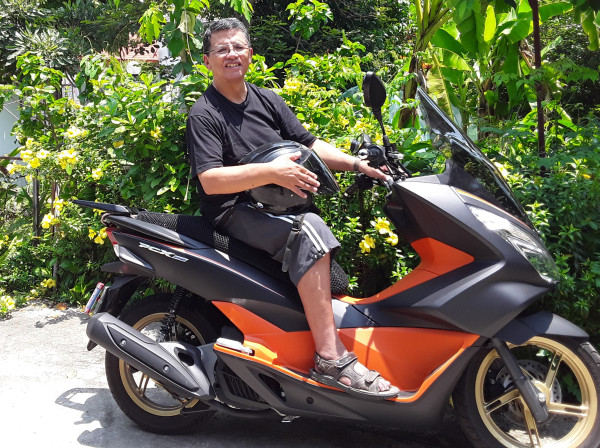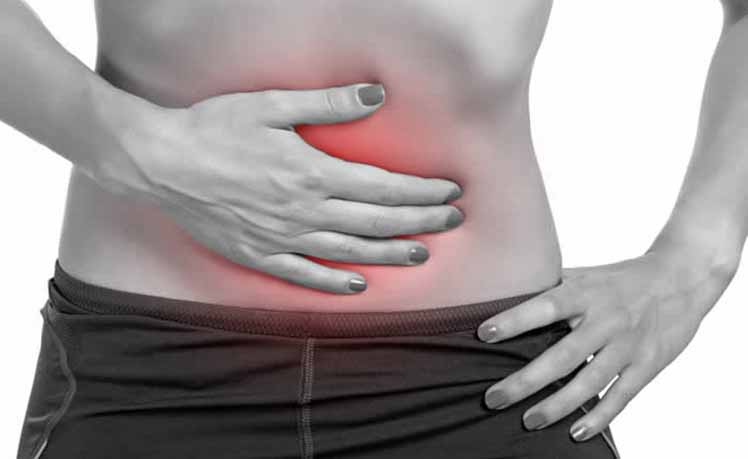Go Ask Alice – Mushrooms and Me in Thailand
Originally posted on May 1, 2017
And you just had some kind of mushroom
And your mind is moving low
Go ask Alice
I think she’ll know
The White Rabbit, Jefferson Airplane
Thailand is a good place for mushroom lovers. Normally when we think of mushrooms we think of the edible kind. My two favorites are the shiitake, in Thai called “fragrant mushrooms”, a basic ingredient of lots of Chinese stir fries and soups, and the wonderful rice-straw mushrooms (also called paddy-straw mushrooms), named for the rice straw they are grown in. These are often found in the Thai restaurant favorite “tum yum” soup.

Shiitaki Mushrooms

Rice-Straw Mushrooms
I remember way back in the 60s, during Chinese New Year’s dinners at our house in New York, the feast’s show-stopper would be that plate of shiitake mushrooms cooked in oyster sauce. Shiitakes were a delicacy and we would have it only once a year because back then, pre Nixon’s visit to China, there was an embargo against Communist Chinese products into the U.S. They had to be smuggled in from Canada and were very expensive, but they were worth the price and the wait. Even today, when they are cultivated almost everywhere, I still consider them a special treat.
The first time I encountered rice-straw mushrooms was my first or second day in country. I thought I had found a heavenly food. My wife Pikun tells me not to order them when we are out at a restaurant now because they are getting expensive and we can make them so much cheaper at home. But I still order “tum yum het” (mushroom tum yum) just about any time I can.
Lately Thailand cultivates lots of other mushrooms. The oyster mushrooms are popular as are those little Japanese ones, enokitake, we find in soups. And every rainy season the hunters and gatherers, of which there are still a few left, go up into the mountains and return with baskets full of wild mushrooms and bamboo shoots. Next time you are driving from Chiang Mai to Lampang (on the way to Bangkok maybe) there is a market at about the 50K mark from CM. You’ll find all kinds of “forest” foods there, bugs and birds, and creepy crawlies, along with lots of mushrooms you’ve never seen before.
For our more adventurous friends, there are the buffalo-shit mushroom (it’s where they grow). Also called cow-dung mushrooms but probably best known as “magic mushrooms” or “psilocybin”. I think this is the kind that Grace Slick and the Jefferson Airplane are singing about (check out the link to “White Rabbit” above). They are technically toadstools, or poisonous, and it has been a long time since I have been that adventurous, but I do have fond memories of drinking “sky juice”, psilocybin tea, on the island of Jamaica and encountering ”kaleidoscopes” when I closed my eyes.

Our experiment in raising Oyster Mushrooms

Enokitake Mushrooms

Magic Mushrooms growing in buffalo dung
But now, since the latest visit from my son Darin, I am getting familiar with medicinal mushrooms, popular where Darin lives, and also becoming quite popular here in Thailand, although the Chinese have known about their healthful properties for centuries. Darin lives on Orcas Island, in Washington State up near the Canadian border in the great Pacific Northwest, aka The “Left Coast”. And there is nothing more “left”, both geographically as well as culturally, as Orcas Island and btw, it is also one of the more beautiful and enchanted places in America, where live more deer and rabbits than people, and where Dungeness crabs and Pacific salmon, and orcas, and whales, and elephant seals, and the huge Stellar Sea lions, and giant octopi, make the waters around Orcas Island a living soup.

Darin and Pikun going out crabbing

Deer population on Orcas Island

The catch
But, as usual, I digress.
I now am learning about reishi, cordycep, and monkey-head mushrooms, as well as jiaokulan, and stevia leaves, all now cultivated in Thailand.

Reishi from a tree trunk in our backyard
Reishi mushrooms have been a staple in the traditional Chinese pharmacology for centuries. They are wood mushrooms that grow on the bases of trees and fallen logs. They are hard like wood and inedible although they can be boiled down and the bitter tea made from them can be drunk.
Formerly they were quite expensive but the price has fallen since the Thais have learned to cultivate them. I have visited a number of reishi farms and research centers in northern Thailand and the hilltribes are raising them and selling them to distributors in Chiang Mai. I get my reishis from the Kings Project markets.
Modern studies on reishi’s effects on our health have been carried out in Japan, China, USA, and the UK.
Health claims for reishis include enhanced immune systems, anti-tumor effects, improved liver function, and lowered blood pressure. Also, reishis are thought to alleviate common allergies by inhibiting histamine release. And of course ingesting them will lead to a longer life, or so it is said.
No side effects have been noted in long-time use of reishis.
Reishis have become a big hit in Thailand and are considered a life lengthener by those who imbibe. They are referred to by the Thai rendering of their Chinese name. In Thai they are called “het lin jeur”, reishi being their Japanese name.
Corteceps (Cordyceps militaris)

Cordyceps. The caterpillar, or what’s left of it, is under the ground.
Cordyceps, aka caterpillar mushrooms, have a very peculiar life cycle. All the things we call mushrooms are really only the flowering part of the organism. The real stuff of mushrooms is called the mycelium. The mycelium usually live underground in long strands looking very similar to a nerve bundle. When it is time to reproduce they send out their “mushrooms” which will open up and spread their spores.
A spore of the cordyceps will find its way on to a caterpillar, embed itself, and the mycelium will start to grow inside the little caterpillar host. It eventually kills the host and a mushroom will sprout from its desiccated body, usually the head.
It may sound creepy but these medicinal mushrooms are hunted in northern China and Tibet and can fetch big bucks. Since the 14 hundreds they have been a part of Chinese medicine.
They reportedly have anti-cancer properties, improve renal function, reduce cholesterol levels, increase energy and testosterone levels but are mainly prized for their aphrodisiac potential (energy). There are even claims that they increase a woman’s libido. I take them of course because they reportedly just make you feel “well”; believe me.
The big drawback to cordyceps is their price, as much as hundreds of dollars an ounce. So for years people have been trying to cultivate these, and they finally they have been successful. I visited the Chiang Mai University mushroom labs and saw their products growing under glass; no caterpillars were harmed in the YouTube video linked to above.
Although the specific species that is cultivated is different from the expensive ones collected on the Tibetan plateau, it is still believed that they have beneficial effects on our health. And the cultivated ones, although a bit pricey, costs way less than their “wild” counterparts.
Monkey head aka Lion’s mane aka Yamabushitake (Hericium Erinaceus)

The Lion’s Mane Mushroom, aka Monkey Head
I don’t take these regularly. You can find them in many markets, sold for food, and they are used in soups, and are also sold as a dietary supplement in capsule form. I have included them here because I really like the name, Monkey Head. But they are supposed to have real medicinal qualities like enhanced memory, nerve growth, and longevity and may someday be used in treating Alzheimer’s.
A leafy plant originally from China, aka Fairy Herb, Southern Ginseng. Claims about Jiaokulan are that it lowers cholesterol, and blood pressure and improves heart function. It is supposed to be an anti-aging agent, an antioxidant, and is a detoxifying agent. Supposedly it also improves memory and prevents hair loss. If the last is true then I’d buy stock right now.
Jiaokulan leaves can be bought at many large markets and are now sold in tea bags.
I have a bit of trouble with artificial sweeten drinks, especially those that use aspertame. I don’t know if aspertame causes any health problems but when I have used it it has made me feel lousy. And there is that terrible aftertaste. So I have avoided artificial sweeteners.
Stevia is not artificial, it is as sweet as sugar, and there is no aftertaste. Stevia is also sold in markets in Thailand.
*****
With my son’s encouragement I have been using some of these medicinal herbs and mushrooms. I don’t know if they have had an effect on my longevity, but I’m not dead yet so, Maybe.
My morning mushroom concoction (Life Juice)
- I cut up about 10 pieces of dried reishi mushrooms into a large pot. Bring it to a boil and then turn it down to simmer for about 3 hours.
- After about 3 hours I put in the jiaokulan leaves. I currently use the kind that are in tea bags of which I use 4.
- The reishi mushroom tea is quite bitter so after I turn the heat off I add stevia leaves. Normally stevia sweetens the drink but because of the bitterness of the reishi it balances everything out to neutral so it isn’t really sweet but the bitterness is gone.
- I strain this concoction into a large bottle which I refrigerate; enough life juice for a week or so.
- Each morning I take a large cup, squeeze half a lemon into it and a pinch of cordycep mushrooms with a regular tea bag. Green tea or herbal teas work just as well. I fill the cup up halfway with boiling water.
- When the tea is brewed I take the reishi life juice and add it to fill the cup to the top.
- I drink this every morning and if all the literature is right I will be writing this blog for another 50 years.
To learn more about mushrooms (fungi) and how they can save the world you can watch Paul Stamet’s TED Talk here.





